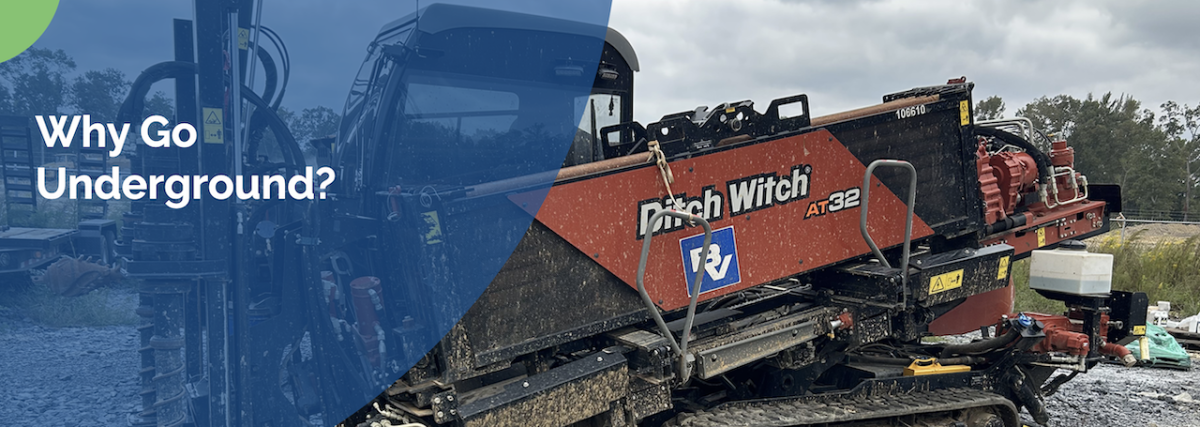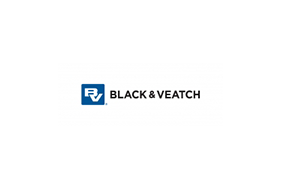Black & Veatch Insights: Why Go Underground?
Why Go Underground? Four Benefits of Underground Distribution Systems
Published 03-20-24
Submitted by Black & Veatch

By The Black & Veatch Insights Group
As a trusted and reputable energy utility, you’re focused on building a strong connection to your customers. Your power distribution system’s ability to provide affordable service, effectively withstand the elements, mitigate security threats and comply with evolving regulations directly impacts your customers. No matter if they are in a dense urban city, a suburban sprawl or a remote rural community, customers are asking their utilities to consider the transition from overhead to underground power distribution — especially in the wake of increasingly extreme weather events. Compared to traditional overhead distribution, underground systems offer the following benefits to energy utilities and their surrounding communities:
1. Facilitates Long-Term Cost Savings
While the initial installation costs of underground systems can be higher than overhead systems, utilities can expect lower maintenance and repair costs — in addition to savings from the reduced frequency and duration of outages. At first, you might be wary of the higher costs of installation: excavation, drilling, and pulling and splicing cable requires extra time, sophisticated expertise and special equipment compared to the installation of traditional overhead power lines. Fortunately, underground systems have less exposure to extreme weather and therefore don’t cost nearly as much to repair and maintain. Overhead power systems also require regular vegetation management (and associated traffic control) — a costly and tedious management practice that isn’t necessary for underground systems. Underground systems typically take up less rights of way (ROW), so compared to overhead systems there’s no additional costs for securing easements. Over the expected 30- to 40-year life expectancy of an underground system, these savings quickly offset the initial installation costs.
2. Increases Reliability and Resilience
Underground systems are less susceptible to damage from natural disasters such as hurricanes, tornadoes, lightning strikes, ice storms and heavy snowfall — minimizing the risk and duration of outages. Since they are isolated underground at a relatively consistent temperature, these systems are neither threatened by wildfires nor in danger of causing wildfires. Although underground systems still are susceptible to flooding, the equipment typically is buried at least three feet deep and designed to resist water (to a certain extent). Unlike traditional overhead systems, underground systems are not vulnerable to damage from trees falling on the lines or curious wild animals shorting out insulators. This overall improved reliability is especially critical for essential service facilities such as hospitals, police stations and data centers.
It's also important to consider any upgrades necessary to support electrification of consumer vehicles, commercial fleets and buildings in your service area. Underground systems offer opportunities to leverage the latest innovations in distribution including smart grid technology, automatic reclosers, viper switches and fault detection in earthquake-prone areas — further increasing the reliability and resilience of your system.
3. Enhances Safety and Security
Without exposed wires or poles, underground distribution systems mitigate the risk of electrocution injuries and accidents for construction workers and homeowners. In the United States, anyone who is excavating or digging can call the 811 Underground Service Alert hotline and be informed of all types of underground utilities in the area. Underground systems are less vulnerable to deliberate acts of vandalism or terrorism since they aren’t as accessible as overhead systems. There have been recent news stories of nefarious individuals attacking overhead insulators or de-energizing public facilities such as schools; underground equipment is far more difficult for unauthorized personnel to reach.
4. Relieves Regulatory, Customer Pressure
Regulatory agencies around the country are shifting requirements in favor of underground systems. In California, lawmakers are turning to utilities to reduce wildfire dangers; in Florida and Alabama, local governments are requiring underground systems in the hopes of making the power grid more resilient to major storms.
Underground systems also are considered more aesthetically pleasing (and less disruptive to customer views) due to the elimination of overhead wires, poles and transformers. Additionally, these systems facilitate more flexibility in urban planning and development because they allow for vertical building by mitigating clashes with overhead lines and poles.
Utilities are facing regulatory and customer pressure for environmental concerns as well. Underground systems have a smaller environmental footprint because they don’t require extensive overhead infrastructure, which is especially beneficial in environmentally sensitive areas. Horizontal directional drilling is less disruptive to the environment than trenching; for example, rather than disturbing a waterway such as a lake or river, underground systems can be routed directly underneath.
Next Steps: Collaborate with an Expert Partner to Guide Your Underground Journey
Underground distribution systems are essential to future-proof critical infrastructure and ensure affordable, dependable and resilient service for your customers. As utilities seek additional renewable energy options (such as solar and wind power) that require extensive underground cabling, these systems become even more essential. Whether you’re most interested in cost savings, resiliency, security or simply relieving regulatory pressures, there are numerous benefits to migrating your overhead distribution systems, underground. Consider working with an expert engineering, procurement and construction (EPC) partner that can offer everything you need in-house: experienced design services, long-standing supply chain relationships, access to sophisticated drilling equipment and skilled installers. A truly experienced partner will know how to overcome common deployment challenges, minimize service disruptions to protect your investments and navigate the complexities of available funding (such as the Inflation Reduction Act (IRA), the Grid Innovation Partnerships Program (GRIP), and Texas House Bill 2555) to support costly upgrade projects. With touchpoints at every stage of the infrastructure lifecycle, your EPC partner will be incentivized to provide high-quality work from start to finish, and you’ll receive a turnkey solution.
Overland Contracting Inc. (OCI), a Black & Veatch company, leads the industry with reliable critical infrastructure solutions. OCI’s construction solutions for underground distribution systems are founded upon decades of large-scale power delivery experience. Backed by the integrated engineering capabilities of our parent company, OCI promises safe, efficient, and high-quality underground distribution projects. We have the in-house skills and resources necessary to solve any environmental, regulatory, or technical challenge—whether we’re installing a new underground system or updating existing infrastructure. Talk to our agile and adaptive team about achieving your unique distribution system goals.

Black & Veatch
Black & Veatch
Black & Veatch is an employee-owned engineering, procurement, consulting and construction company with a more than 100-year track record of innovation in sustainable infrastructure. Since 1915, we have helped our clients improve the lives of people in over 100 countries through consulting, engineering, construction, operations and program management. Our revenues in 2018 were US$3.5 billion. Follow us on www.bv.com and in social media.
More from Black & Veatch

